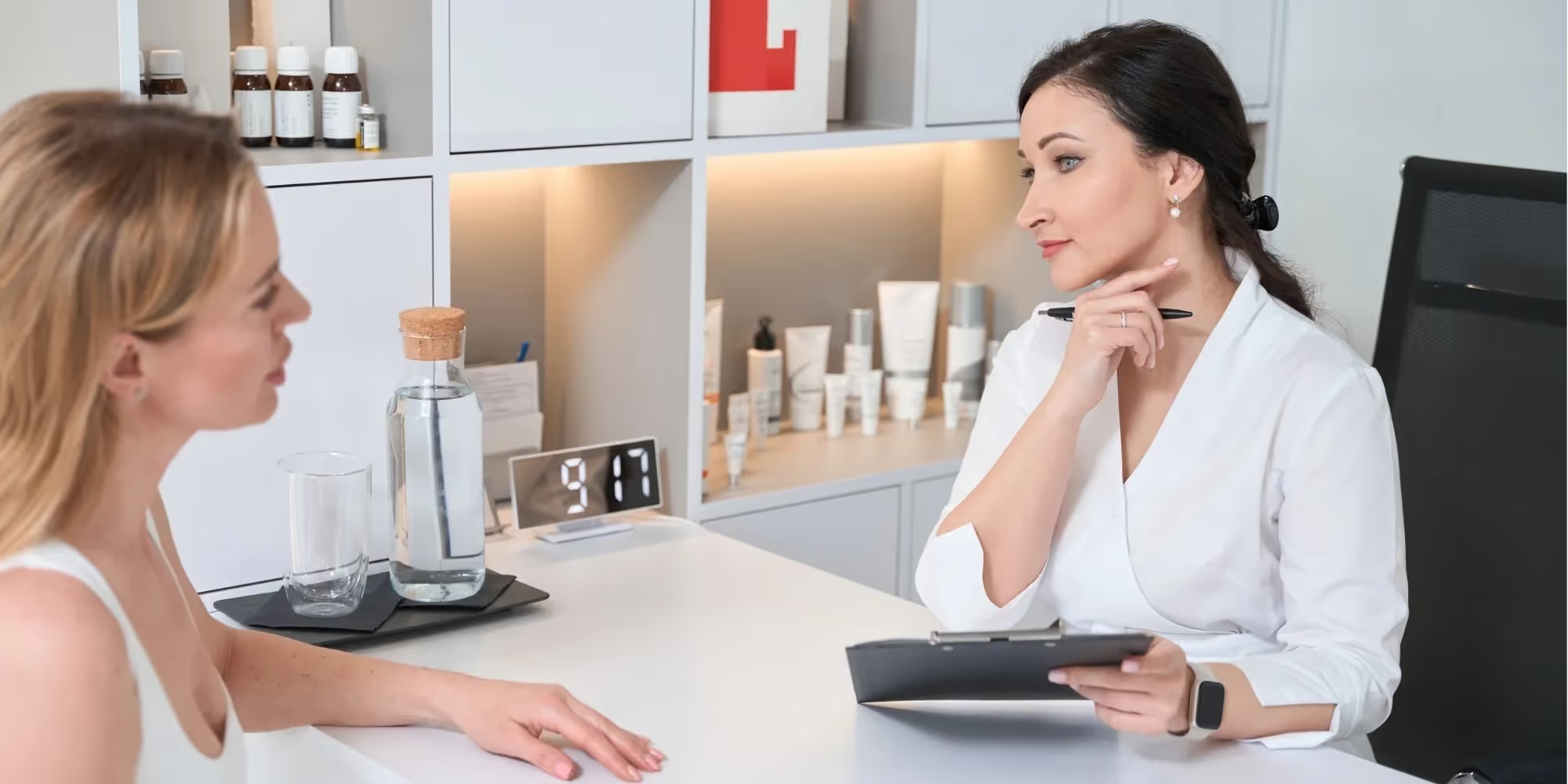Get access to the full brand analysis now
Enter your company email address below to receive the full brand analysis.
By clicking Sign Up you're confirming that you agree with our Terms and Conditions.
Experience the market's most accurate AI
Schedule a demo to discover how Thea's AI solutions can help you foster your customer engagement, brand awareness, trust, and conversions.
Request a meetingIntroduction
A professional skin consultation helps eliminate the guesswork in choosing skincare treatments and routines. It provides a tailored approach to skincare that evolves as the customer’s skin changes. This guide is directed towards skincare pharmacy sales reps, who play a crucial role in guiding customers to healthier skin through informed advice.
Initial Engagement with the Customer and Building Trust
To start, engage with the customer by talking to them in a friendly and approachable manner. Ask if they would be interested in a skin consultation or a free skin assessment, which can help them better understand their skin's needs. Understanding the customer's concerns is key—ask them specifically about issues like acne, signs of aging, dryness, or other skin problems. Make sure you get a clear sense of what they are looking for and what their main concerns are. Additionally, determine how many steps the customer is comfortable including in their skincare routine, as this will help in crafting a regimen that is easy for them to follow.
Conducting a Skin Analysis
Once the initial engagement is complete, proceed with the skin analysis. Begin by having a closer look at the customer’s skin, paying attention to any visible conditions such as redness, texture, or uneven tone. Consider using tools or diagnostic devices to get a more precise analysis if the customer agrees. These tools can provide valuable insights into underlying skin issues like hydration levels, elasticity, and pigmentation that may not be visible to the naked eye.
Detailed Questions for an In-Depth Skin Analysis
If you cannot determine the skin type visually, ask about the customer's skin type, any known skin conditions, their current skincare routine, and lifestyle factors that may be affecting their skin. Additionally, inquire if they have noticed any changes in their skin recently, which could indicate the need for different treatments. A detailed skin analysis requires asking specific, targeted questions. Further questions will depend on the customer’s specific skin concerns, so it is not possible to list all of them here.
For example, if a customer has very shiny skin, you might ask if they are currently wearing makeup, as this can influence the appearance of shine. You could also inquire about their cleansing routine, whether they use mattifying products, or if they are experiencing excess oil throughout the day.
Tailoring your questions based on the observed condition will lead to more personalized and effective recommendations. These questions can help infer vital information about the customer's skin and potential issues.
Draw Conclusions
With all the gathered information, it is time to draw conclusions. A perfect skin consultation and skincare recommendation should consider multiple factors. First, determine the specific skin problem. Did you observe primary efflorescences like papules or pustules, redness, scales, or hyperpigmentation? Also, take into account the customer’s skin type, taking note of the size of pores, any scaling, skin tone, blemishes, and overall texture.
There are other parameters that can further enhance the accuracy of the skin consultation. Though not always available, it helps to consider the customer’s age and sex, whether there is an obvious skin disease, and any current factors such as seasonality or hormonal status (e.g., postmenopausal, pregnancy, or adolescence). Potential allergies should also be noted, as these can significantly impact product recommendations.
Recommend a Routine
Once you have a complete understanding of the customer’s skin, recommend a personalized skincare routine. Start by asking how much the customer is willing to spend, as this will help in selecting suitable products without exceeding their budget. Choose ingredients that directly address the customer’s specific skin problems, and explain why each ingredient is effective. Also, take into account the appropriate galenics (formulation types) that fit the skin’s needs, whether it’s creams, serums, gels, or other forms that would be most beneficial for their condition.
Offer Help
After providing the recommendation, check if the customer has any questions or concerns that you can address. It’s important that they feel comfortable and confident about the suggested products and routine. Offer to write down the recommendations so the customer can refer to them later. Lastly, mention any discounts or promotions that might help make the recommended products more affordable, as this can encourage the customer to move forward with their new routine.


